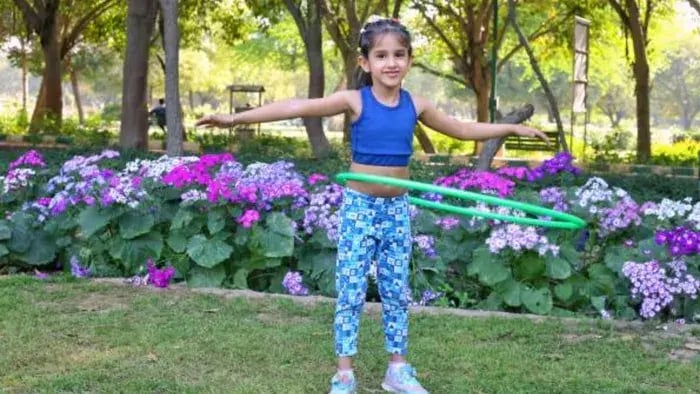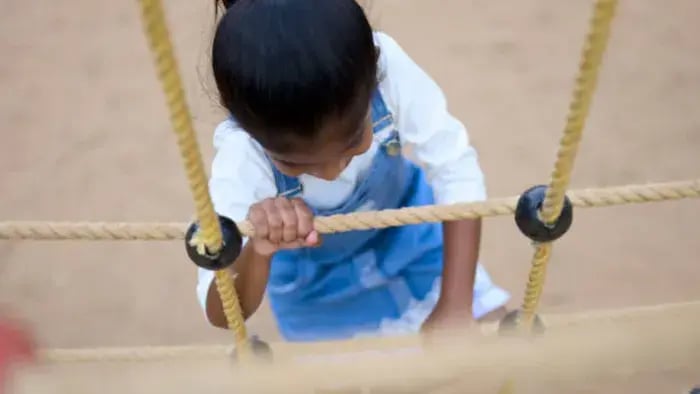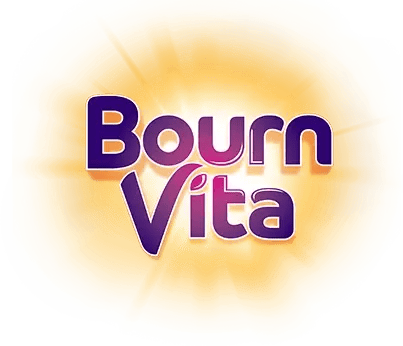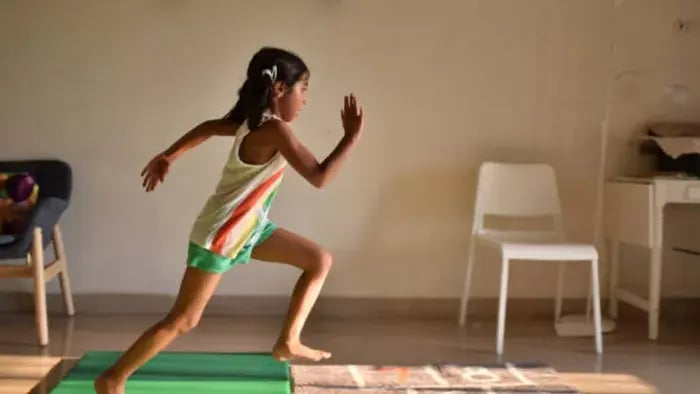- Animal Walk Races
- Dance Freeze
- Balloon Tap Challenge
- Simon Says Stretching Edition
- Treasure Hunt with Tasks
- Shadow Tag
- Balance Beam Line
Introduction

Kids are natural movers; they can do jumping, rolling, sprinting, and climbing without needing a plan. The best part? Most of these unstructured bursts of energy count as exercise. But as screen time goes up and school hours get longer, those spontaneous movement breaks can start to disappear. That’s where fun, low-pressure activities come in. Exercises that feel like games and not “workouts” help kids stay active without losing interest.
Laughter-filled movement is a great way to build healthy habits early. It can be in backyard chase, animal walks or a living room dance freeze; these simple activities build flexibility, stamina, coordination and mood, all while keeping the fun front and center. It should be no timer, no pressure, just feel-good movement that supports physical and mental growth.
This is especially helpful for kids who find traditional workouts boring or hard to follow. With the right ideas, your child can build strength, improve balance and get their heart rate up, all under the guise of play. These moments become part of the daily rhythm, fitting into your family’s flow instead of disrupting it. Think of it as movement by stealth, building health while having fun. Let’s get your child moving with a smile.
7 Fun Exercises for Kids That Don’t Feel Like Workouts

Exercise doesn’t always mean push-ups or running laps. Kids are far more likely to stay active when movement is disguised as play. That’s why turning workouts into games can be a game-changer, pun intended. These types of exercises are light on structure but heavy on joy.
They encourage kids to jump, stretch, balance, and sprint without even realising they’re doing something good for their health. All they know is that they’re having fun. Let’s explore seven easy ways to get your child moving without it feeling like a task.
Animal Walk Races
Ask your child to move like different animals, bear crawl, crab walk, frog jump, or bunny hop. According to a study published in Front Physiol. 2022, each movement targets a different set of muscles and improves coordination. Bear crawls build shoulder and core strength, crab walks engage the glutes and arms, and frog jumps build lower-body power. Create a mini race or obstacle course using these moves to make it competitive and fun. You can even call out an animal mid-way to switch things up.
Dance Freeze
Put on your child’s favourite playlist and let them dance freely. Pause the music at random times, and when it stops, they freeze. As per a study published J Clin Diagn Res. 2016, it helps improve listening skills, balance, and reaction time. This game can be played solo or in groups, and it’s easy to fit in before homework or after school. You can even add a twist, if they wobble, they do a silly task like acting like a robot for 10 seconds.
Balloon Tap Challenge
Blow up a balloon and ask your child to keep it off the ground using any body part except their feet. Study published in Medicine (Baltimore). 2019, shows that this simple game improves hand-eye coordination, quick thinking, and agility. To increase the challenge, add more balloons or set a time limit. It’s an excellent indoor game for small spaces and gives kids a break from screens while building reflexes.
Simon Says Stretching Edition
Take the beloved game of Simon Says and add gentle stretches or yoga poses to it. “Simon says touch your toes,” “Simon says reach for the sky,” or “Simon says stand on one leg like a tree.” research conducted by, J Ayurveda Integr Med. 2023 shows that this variation helps kids work on balance, flexibility, and body awareness. Because it’s a game, they’re focused on following instructions rather than thinking of it as exercise.
Treasure Hunt with Tasks
Create a small indoor or backyard treasure hunt, but add movement challenges between each clue. “Do five-star jumps before reading the next clue,” or “Hop like a frog to the sofa.” According to a study published in the National Academies Press 2013, it not only keeps them physically engaged but also encourages problem-solving and builds excitement. You can use toys or books as treasures and let siblings team up for extra fun.
Shadow Tag
This twist on traditional tag is simple and creative. Instead of tagging the body, kids must step on each other’s shadow. According to Indian Institute Of Remote Sensing, it encourages awareness of space and quick footwork. This is especially fun to play during the early morning or late afternoon when shadows are longer and more visible. It’s perfect for parks, balconies, or any outdoor area with enough sunlight.
Balance Beam Line
Use a tape or a rope on the floor to create a “balance beam.” Have your child walk across without stepping off. Add variations—walk backward, tiptoe, or balance a book on their head. According to The Ministry of Youth Affairs and Sports, this strengthens the core and improves coordination. It’s also helpful for posture and body control, especially in growing children who are still refining their motor skills.
Conclusion

Kids are more likely to stick to movement routines when they’re framed as fun. These exercises don’t need timers, equipment, or pressure, just a playful spirit and a few minutes of your time. A little creativity goes a long way in building strength, balance, and confidence. By turning exercise into an experience, you’re not only supporting your child’s health but also creating joyful memories they’ll carry into adulthood.
Her love for storytelling began with reading her grandfather’s speeches, where Tarishi saw the power of words in creating lasting memories. Combining her passions for food and writing, she has turned her life into a fulfilling path of sharing stories that celebrate flavours and how food brings communities together.
The views expressed are that of the expert alone.
The information provided in this content is for informational purposes only and should not be considered a substitute for professional medical advice, diagnosis, or treatment. Always seek the advice of your physician or another qualified healthcare provider before making any significant changes to your diet, exercise, or medication routines.
References
https://www.ncbi.nlm.nih.gov/books/NBK201493/
https://pmc.ncbi.nlm.nih.gov/articles/PMC10787260/
https://pmc.ncbi.nlm.nih.gov/articles/PMC6336594/
















